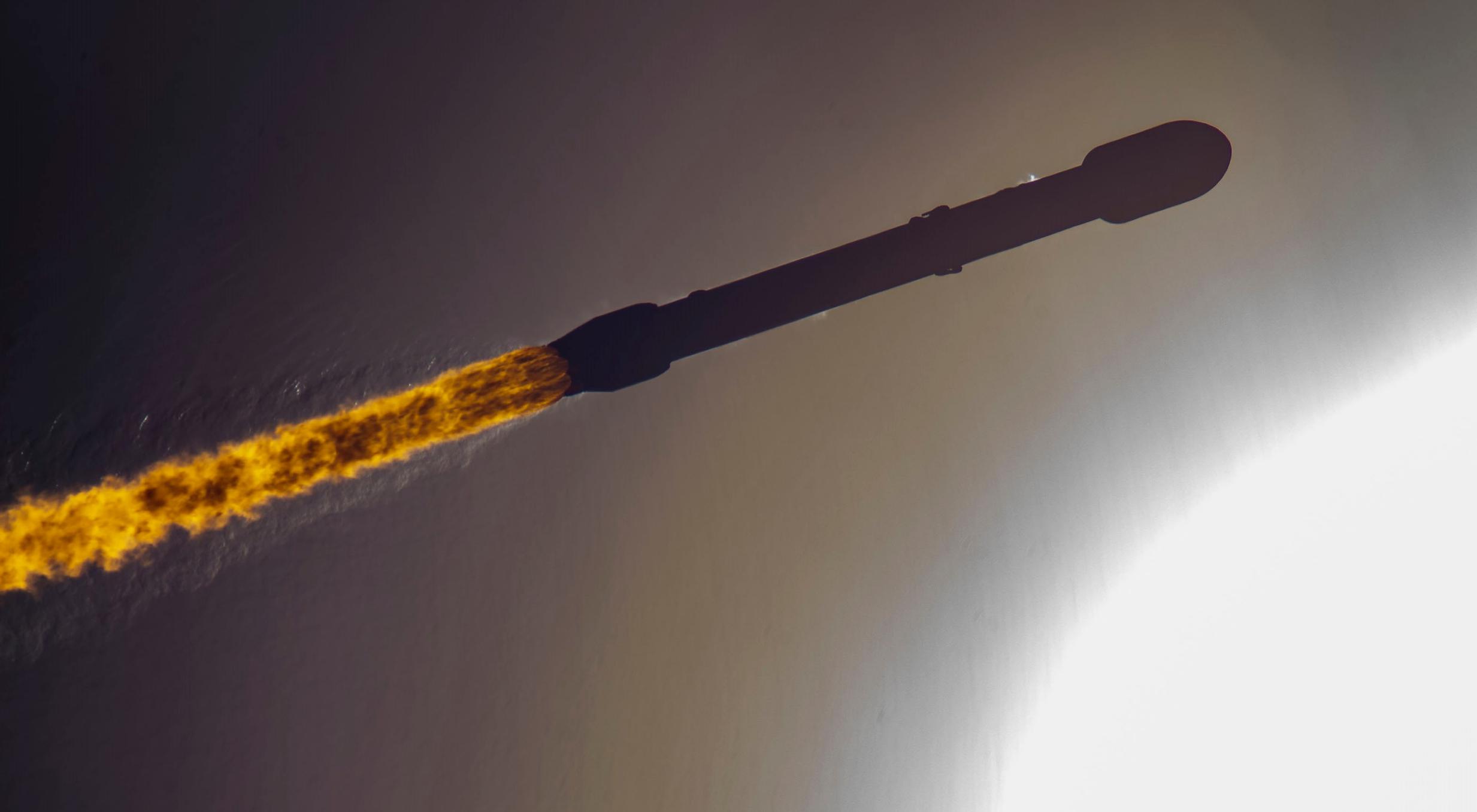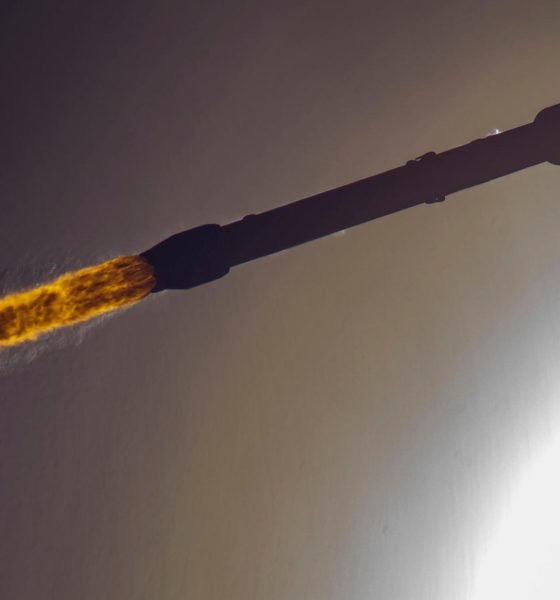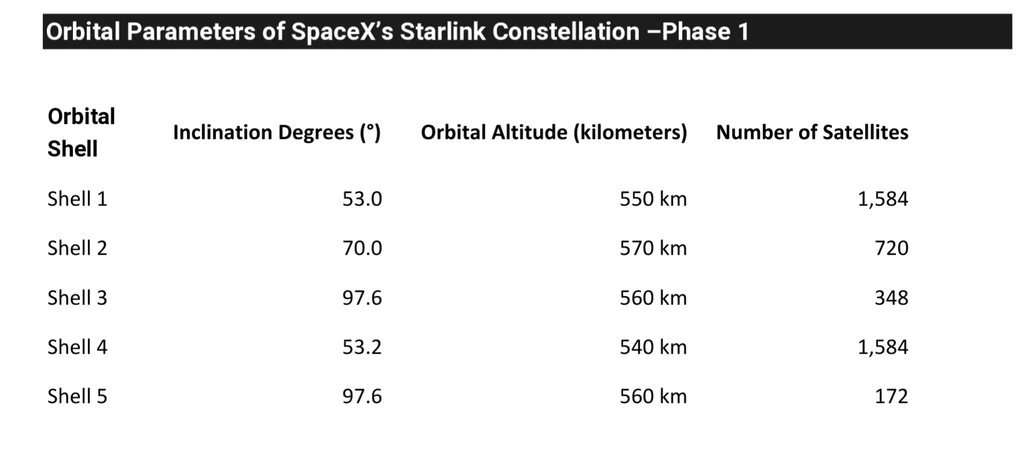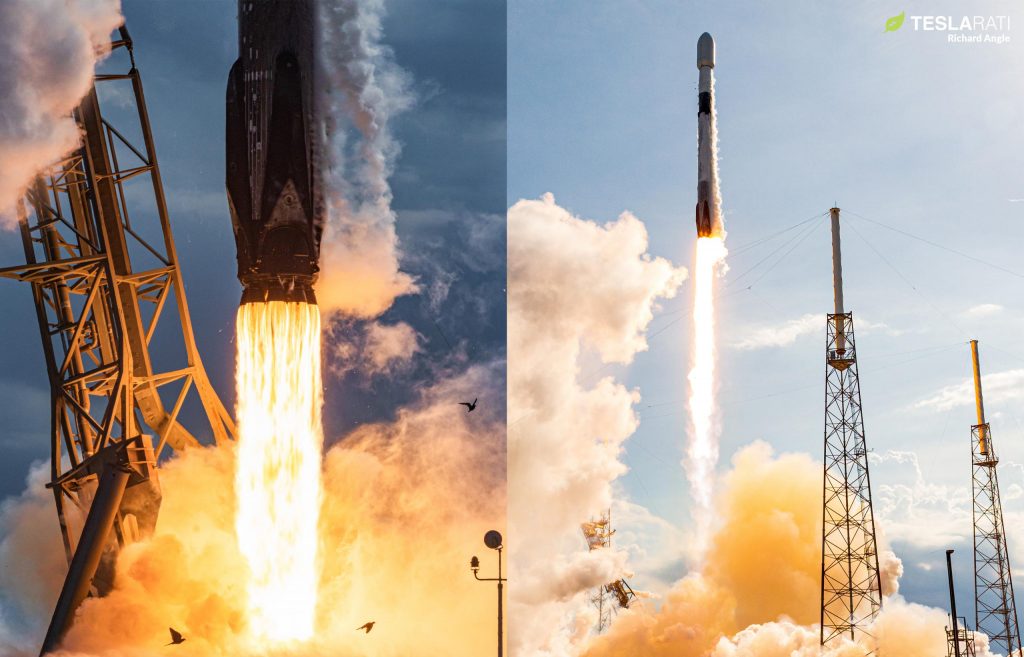

News
SpaceX ready for 31st Starlink launch of 2022
SpaceX is on track to launch its 31st Starlink mission of 2022 later this morning.
No earlier than (NET) 10:50 am EDT (14:50 UTC) on Thursday, October 20th, a Falcon 9 rocket is scheduled to lift off from SpaceX’s Cape Canaveral Air Force Station (CCAFS) LC-40 launch pad with 54 internet satellites in tow. Weighing in at 16.75 tons (~36,900 lb), the batch of Starlink V1.5 satellites is one of just a few left for SpaceX to complete the second of five ‘shells’ that make up its first constellation.
Even before today’s Starlink 4-36 launch, more than two-thirds of the 4408 satellites required to complete the constellation are already in orbit and (by all appearances) working as expected. Of the 3131 working satellites in orbit, approximately 2700 are at their operational altitudes and theoretically capable of serving customers on Earth. Another ~390 satellites are in the process of climbing to their operational orbits. Once they’re done, SpaceX’s first Starlink constellation will be more than two-thirds complete.
The constellation is made up of five orbital ‘shells’ – distinct groups of satellites that share a similar orbital inclination (the angle between the satellite’s orbit and Earth’s equator) and altitude. Two of those shells, known as Group 1 and Group 4, contain 3168 satellites or more than two-thirds of the constellation. They’re nearly identical and focus on Earth’s mid-latitudes, where almost every person (and customer) on Earth resides. Both are almost complete: astrophysicist Jonathan McDowell estimates that 1456 of 1584 possible Group 1 satellites are operational. Group 4 is one launch behind, with about 1405 working satellites in orbit.

In addition to Starlink 4-36, SpaceX has one more Starlink launch (4-31) tentatively scheduled in late October. The company’s November manifest is jam-packed with up to five commercial launches, potentially precluding any additional Starlink launches next month. December could be an even more commercially productive month if just a handful of schedules hold. But there’s a chance that SpaceX will find space to complete two more Starlink launches within the next ten weeks, allowing it to nearly complete Group 4 by the end of the year.
Once #4 is complete, all future launches for SpaceX’s first-generation Starlink constellation will likely head to one of three shells with semi-polar or polar inclinations. Group 2, the largest of the remaining shells with a planned 720 satellites, can be launched from any of SpaceX’s three pads. SpaceX has already launched one batch of Group 2 satellites and will need to complete ~13 more launches to finish the shell. Finally, more than half of Group 3’s 348 satellites have already been launched, but SpaceX has yet to start Group 5 (172 satellites). Both Group 3 and Group 5 will likely be launched out of SpaceX’s California launch pad.

Including an allowance for several dozen on-orbit satellite failures over the same period, SpaceX’s first Starlink constellation thus appears to be about 23 launches away from completion. If SpaceX matches its 2022 cadence in 2023, the entire 4408-satellite constellation could be fully operational before the end of next year. If SpaceX can hit its target of 100 total launches in 2023, the first Starlink constellation could be fully operational months before the end of 2023.
Even with a third of its satellites still on the ground, Starlink is close to an order of magnitude larger than any other constellation in history. Confirming an estimate shared by Teslarati earlier this year, CEO Elon Musk says that SpaceX now owns and operates more than half of all active satellites in orbit less than three years after the company began operational Starlink launches.
Tune in below to watch SpaceX’s 31st Starlink mission and 48th launch this year.

Elon Musk
Elon Musk and Tesla AI Director share insights after empty driver seat Robotaxi rides
The executives’ unoccupied tests hint at the rapid progress of Tesla’s unsupervised Robotaxi efforts.

Tesla CEO Elon Musk and AI Director Ashok Elluswamy celebrated Christmas Eve by sharing personal experiences with Robotaxi vehicles that had no safety monitor or occupant in the driver’s seat. Musk described the system’s “perfect driving” around Austin, while Elluswamy posted video from the back seat, calling it “an amazing experience.”
The executives’ unoccupied tests hint at the rapid progress of Tesla’s unsupervised Robotaxi efforts.
Elon and Ashok’s firsthand Robotaxi insights
Prior to Musk and the Tesla AI Director’s posts, sightings of unmanned Teslas navigating public roads were widely shared on social media. One such vehicle was spotted in Austin, Texas, which Elon Musk acknowleged by stating that “Testing is underway with no occupants in the car.”
Based on his Christmas Eve post, Musk seemed to have tested an unmanned Tesla himself. “A Tesla with no safety monitor in the car and me sitting in the passenger seat took me all around Austin on Sunday with perfect driving,” Musk wrote in his post.
Elluswamy responded with a 2-minute video showing himself in the rear of an unmanned Tesla. The video featured the vehicle’s empty front seats, as well as its smooth handling through real-world traffic. He captioned his video with the words, “It’s an amazing experience!”
Towards Unsupervised operations
During an xAI Hackathon earlier this month, Elon Musk mentioned that Tesla owed be removing Safety Monitors from its Robotaxis in Austin in just three weeks. “Unsupervised is pretty much solved at this point. So there will be Tesla Robotaxis operating in Austin with no one in them. Not even anyone in the passenger seat in about three weeks,” he said. Musk echoed similar estimates at the 2025 Annual Shareholder Meeting and the Q3 2025 earnings call.
Considering the insights that were posted Musk and Elluswamy, it does appear that Tesla is working hard towards operating its Robotaxis with no safety monitors. This is quite impressive considering that the service was launched just earlier this year.
Elon Musk
Starlink passes 9 million active customers just weeks after hitting 8 million
The milestone highlights the accelerating growth of Starlink, which has now been adding over 20,000 new users per day.

SpaceX’s Starlink satellite internet service has continued its rapid global expansion, surpassing 9 million active customers just weeks after crossing the 8 million mark.
The milestone highlights the accelerating growth of Starlink, which has now been adding over 20,000 new users per day.
9 million customers
In a post on X, SpaceX stated that Starlink now serves over 9 million active users across 155 countries, territories, and markets. The company reached 8 million customers in early November, meaning it added roughly 1 million subscribers in under seven weeks, or about 21,275 new users on average per day.
“Starlink is connecting more than 9M active customers with high-speed internet across 155 countries, territories, and many other markets,” Starlink wrote in a post on its official X account. SpaceX President Gwynne Shotwell also celebrated the milestone on X. “A huge thank you to all of our customers and congrats to the Starlink team for such an incredible product,” she wrote.
That growth rate reflects both rising demand for broadband in underserved regions and Starlink’s expanding satellite constellation, which now includes more than 9,000 low-Earth-orbit satellites designed to deliver high-speed, low-latency internet worldwide.
Starlink’s momentum
Starlink’s momentum has been building up. SpaceX reported 4.6 million Starlink customers in December 2024, followed by 7 million by August 2025, and 8 million customers in November. Independent data also suggests Starlink usage is rising sharply, with Cloudflare reporting that global web traffic from Starlink users more than doubled in 2025, as noted in an Insider report.
Starlink’s momentum is increasingly tied to SpaceX’s broader financial outlook. Elon Musk has said the satellite network is “by far” the company’s largest revenue driver, and reports suggest SpaceX may be positioning itself for an initial public offering as soon as next year, with valuations estimated as high as $1.5 trillion. Musk has also suggested in the past that Starlink could have its own IPO in the future.
News
NVIDIA Director of Robotics: Tesla FSD v14 is the first AI to pass the “Physical Turing Test”
After testing FSD v14, Fan stated that his experience with FSD felt magical at first, but it soon started to feel like a routine.

NVIDIA Director of Robotics Jim Fan has praised Tesla’s Full Self-Driving (Supervised) v14 as the first AI to pass what he described as a “Physical Turing Test.”
After testing FSD v14, Fan stated that his experience with FSD felt magical at first, but it soon started to feel like a routine. And just like smartphones today, removing it now would “actively hurt.”
Jim Fan’s hands-on FSD v14 impressions
Fan, a leading researcher in embodied AI who is currently solving Physical AI at NVIDIA and spearheading the company’s Project GR00T initiative, noted that he actually was late to the Tesla game. He was, however, one of the first to try out FSD v14.
“I was very late to own a Tesla but among the earliest to try out FSD v14. It’s perhaps the first time I experience an AI that passes the Physical Turing Test: after a long day at work, you press a button, lay back, and couldn’t tell if a neural net or a human drove you home,” Fan wrote in a post on X.
Fan added: “Despite knowing exactly how robot learning works, I still find it magical watching the steering wheel turn by itself. First it feels surreal, next it becomes routine. Then, like the smartphone, taking it away actively hurts. This is how humanity gets rewired and glued to god-like technologies.”
The Physical Turing Test
The original Turing Test was conceived by Alan Turing in 1950, and it was aimed at determining if a machine could exhibit behavior that is equivalent to or indistinguishable from a human. By focusing on text-based conversations, the original Turing Test set a high bar for natural language processing and machine learning.
This test has been passed by today’s large language models. However, the capability to converse in a humanlike manner is a completely different challenge from performing real-world problem-solving or physical interactions. Thus, Fan introduced the Physical Turing Test, which challenges AI systems to demonstrate intelligence through physical actions.
Based on Fan’s comments, Tesla has demonstrated these intelligent physical actions with FSD v14. Elon Musk agreed with the NVIDIA executive, stating in a post on X that with FSD v14, “you can sense the sentience maturing.” Musk also praised Tesla AI, calling it the best “real-world AI” today.








